The Senior Advisory Council provides high-level strategic input to the institute and includes eminent thought leaders in a variety of fields that synergize to advance our understanding of the neurosciences.

Ann Arvin
Vice Provost and Dean of Research, Lucile Salter Packard
Professor of Pediatrics and of Microbiology and Immunology
CAP Profile
Arvin is the Lucile Salter Packard Professor of Pediatrics (Infectious Diseases) and Microbiology & Immunology at Stanford University School of Medicine. Dr. Arvin’s basic research focuses on the molecular virology and pathogenesis of varicella-zoster virus (VZV), a medically important herpesvirus that causes varicella (chickenpox) and zoster (shingles). Her laboratory pioneered a severe combined immunodeficiency (SCID) mouse model of VZV pathogenesis and has used this approach to define viral gene functions required for infection of skin, T cells and neurons, cell-type specific regulation of viral gene expression by host factors, and immunoevasion mechanisms. She has been Vice Provost and Dean of Research at Stanford since 2006, which includes responsibility for overseeing the university-wide independent laboratories, centers and institutes.

Ben Barres
Professor of Neurobiology, of Developmental Biology and of Neurology
Lab Website | CAP Profile
Barres is interested in the development and function of glial cells in the mammalian central nervous system. To understand the interactions between neurons and glial cells his laboratory has developed methods to highly purify and culture retinal ganglion cells (neurons) as well as the glial cell types they interact with, oligodendrocytes and astrocytes, from the rodent optic nerve. Barres is using a large variety of methods to address these issues including cell purification by immunopanning, tissue culture, patch clamping, immunohistochemistry and molecular biology.
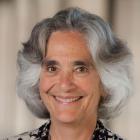
Persis Drell
Frederick Emmons Terman Dean of the School of Engineering
James and Anna Marie Spilker Professor in the School of Engineering and a professor of Materials Science and Engineering and Physics
CAP Profile
Drell is the Frederick Emmons Terman Dean of the Stanford School of Engineering, the James and Anna Marie Spilker Professor in the School of Engineering and a professor of Materials Science and Engineering and Physics at Stanford University. Dean Drell, who assumed her current post in September 2014, has been on the faculty at Stanford since 2002 and was director of the 1,600-employee U.S. Department of Energy SLAC National Accelerator Laboratory from 2007 to 2012. Her research interests are in technology development for free electron lasers and particle astrophysics. She is a member of the National Academy of Sciences and the American Academy of Arts and Sciences, and is a fellow of the American Physical Society. Dean Drell has been the recipient of a Guggenheim Fellowship and a National Science Foundation Presidential Young Investigator Award. She received her bachelor's degree in mathematics and physics from Wellesley College and her doctorate in atomic physics from the University of California, Berkeley.
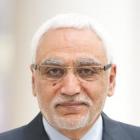
Abbas El Gamal
Hitachi American Professor in the School of Engineering
Professor and Chair of Electrical Engineering
Lab Website | CAP Profile
El Gamal applies statistical tools, signal processing, and system-on-chip design techniques to problems in imaging and configurable circuits. He also investigates theoretical problems arising in communications and networks.
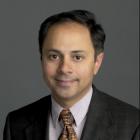
Sanjiv Sam Gambhir
Virginia and D.K. Ludwig Professor for Clinical Investigation in Cancer Research
Professor and Chair of Radiology and Professor, by courtesy, of Bioengineering and of Materials Science & Engineering
Lab Website | CAP Profile
Gambhir's laboratory is developing imaging assays to monitor fundamental cellular/molecular events in living subjects including patients. Technologies such as micro positron emission tomography (microPET), bioluminescence optical imaging, fluorescence optical imaging, micro computerized axial tomography (microCAT), ultrasound, photoacoustics, Raman imaging are all being actively investigated in small animal models. Our goals are to marry fundamental advances in molecular/cell biology with those in biomedical imaging to advance the field of molecular imaging. We have a particular interest in cancer biology and gene therapy. Research in early cancer detection and pharmacological therapy assessment is also being performed. Assays to interrogate cells for mRNA levels, cell surface antigens, intracellular proteins and protein-protein interactions are under active development. We are also extending many of these approaches for human clinical applications using optical and PET-CT technologies.

Ian Gotlib
David Starr Jordan Professor
Professor and Chair of Psychology
Lab Website | CAP Profile
In the broadest sense, Gotlib's research focuses on Depression and Anxiety Disorders. He studies attentional and memory biases in the processing of emotional information, neural substrates of emotional dysfunction in depression and anxiety using fMRI, and cognitive and biological mechanisms that underlie the intergenerational transmission of risk for different types of psychopathology.

John Huguenard
Professor of Neurology and, by courtesy, of Molecular and Cellular Physiology and of Neurosurgery
Lab Website | CAP Profile
Huguenard is interested in the neuronal mechanisms that underlie synchronous oscillatory activity in the thalamus, cortex and the massively interconnected thalamocortical system. Such oscillations are related to cognitive processes, normal sleep activities and certain forms of epilepsy. His approach is an analysis of the discrete components that make up thalamic and cortical circuits, and reconstitution of components into both in vitro biological and in silico computational networks. Accordingly, we have been able to identify genes whose products, mainly ion channels, play key roles in the regulation of thalamocortical network responses.

Robert Jackler
Edward C. and Amy H. Sewall Professor in Otorhinolaryngology
Professor of Otolaryngology, and Professor, by courtesy, of Neurosurgery and of Surgery
Lab Website | CAP Profile
Jackler is an otologist-neurotologist who specializes in complex ear diseases. He has a special interest in tumors of the lateral and posterior cranial base and has written numerous analytical papers derived from his microsurgical series. A long standing collaboration with medical artist Chirstine Gralapp has produced over 1500 original illustrations of a wide variety of cranial base and ear microsurgical approaches. For over 25 years, Jackler has directed a fellowship program in neurotology & skull base surgery which has trained a number of academic leaders in the field.
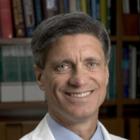
Frank Longo
George E. and Lucy Becker Professor in Medicine
Professor of Neurology and, by courtesy, of Neurosurgery
Lab Website | CAP Profile
Longo's clinical interests include Alzheimers disease and Huntingtons disease and the development of effective therapeutics for these disorders. His research group is focused on the discovery of cellular signaling mechanisms that serve as a basis for the development of novel therapeutic approaches for Alzheimers disease, Huntingtons disease and other neurological disorders. In Longo's Neurotrophin Program, researchers have pioneered the development of small molecule ligands targeted to neurotrophin receptors to promote novel signaling mechanisms. Small molecule-induced activation of these mechanisms demonstrates therapeutic efficacy in models of Alzheimers disease, Huntingtons disease, Parkinsons disease, spinal cord injury, amyotrophic lateral sclerosis (ALS), HIV dementia and other areas. These novel compounds also promote neurogenesis from stem cells.

Lloyd Minor
The Carl and Elizabeth Naumann Professorship for the Dean of the School of Medicine
Professor of Otolaryngology - Head and Neck Surgery
CAP Profile
Minor is a scientist, surgeon, and academic leader. He is the Carl and Elizabeth Naumann Dean of the Stanford University School of Medicine, a position he has held since December 1, 2012. He is also a professor of Otolaryngology–Head and Neck Surgery and a professor of Bioengineering and of Neurobiology, by courtesy, at Stanford University. As dean, Dr. Minor plays an integral role in setting strategy for the clinical enterprise of Stanford Medicine, an academic medical center that includes the Stanford University School of Medicine, Stanford Health Care, and Stanford Children’s Health and Lucile Packard Children’s Hospital Stanford. He also oversees the quality of Stanford Medicine’s physician practices and growing clinical networks.
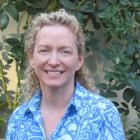
Laura Roberts
Katherine Dexter McCormick and Stanley McCormick Memorial Professor in the School of Medicine
Professor of Psychiatry and Behavioral Sciences
Lab Website | CAP Profile
Roberts has performed numerous empirical studies of contemporary ethics issues in medicine and health policy and has been funded by the National Institutes of Health, the Department of Energy, the National Alliance of Schizophrenia and Depression, the Arnold P. Gold Foundation, and other private and public foundations.

Richard Saller
Vernon R. and Lysbeth Warren Anderson Dean of the School of H&S
Kleinheinz Family Professor of European Studies
Profile
Saller is the Vernon R. and Lysbeth Warren Anderson Dean of the School of Humanities and Sciences and the Kleinheinz Family Professor of European Studies at Stanford University. Previously he was Provost and Dean of the Social Sciences Division at the University of Chicago. He taught at Swarthmore College and held visiting professorships and fellowships at the University of California, Berkeley and Jesus College, Cambridge. His research focuses on Roman social and economic history, in particular, patronage relations, the family, and the imperial economy. He uses literary, legal, and epigraphic materials, as well as computer simulations, to investigate issues of social hierarchy, gender distinctions, and economic production.

Dan Schwartz
Nomellini & Olivier Professor of Educational Technology
Lab Website | Profile
A member of the SUSE faculty since 2000, Dr. Schwartz studies student understanding and representation and the ways that technology can facilitate learning. He works at the intersection of cognitive science, computer science, and education, examining cognition and instruction in individual, cross-cultural, and technological settings. A theme throughout Dr. Schwartz's research is how people's facility for spatial thinking can inform and influence processes of learning, instruction, assessment and problem solving. He finds that new media make it possible to exploit spatial representations and activities in fundamentally new ways, offering an exciting complement to the verbal approaches that dominate educational research and practice.

Carla Shatz
Sapp Family Provostial Professor
David Starr Jordan Director, Stanford Bio-X
Professor of Biology and of Neurobiology
Lab Website | CAP Profile
By studying the visual system of mammals, the Shatz Lab discovered that adult wiring emerges from dynamic interactions between neurons involving neural function and synaptic plasticity. Even before birth and long before vision, the eye spontaneously generates and sends coordinated patterns of neural activity to the brain. Blocking this activity in utero, or preventing vision after birth, disrupts normal tuning up of circuits and brain wiring. In turn, neural activity regulates the expression of genes involved in the process of circuit tuning. To discover cell and molecular underpinnings of circuit tuning, her lab has conducted functional screens for genes regulated by neural activity. Shatz's lab employs a variety of approaches in these studies, ranging from molecular biology to slice electrophysiology to in vivo imaging to behavior. Her research has relevance not only for understanding brain wiring and developmental disorders such as Autism and Schizphrenia, but also for understanding how the nervous and immune systems interact.
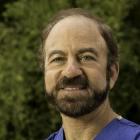
Gary Steinberg
Bernard and Ronni Lacroute-William Randolph Hearst Professor in Neurosurgery and Neurosciences
Professor of Neurosurgery and, by courtesy, of Neurology
CAP Profile
Steinberg’s experimental research investigates the pathophysiology and treatment of acute cerebral ischemia, as well as methods to restore function after stroke. His laboratory has studied the role of excitatory amino acids, oxidative stress, inflammation and gene expression on experimental stroke, and has explored various neuroprotective and restorative strategies such as NMDA antagonists, anti-inflammatory agents, mild brain hypothermia, gene transfer therapy, stem cell transplantation, and optogenetic stimulation. His clinical research is focused on developing innovative surgical, endovascular and radiosurgical approaches for treating patients with difficult intracranial aneurysms, complex vascular malformations and occlusive cerebrovascular disorders, as well as clinical trials of stem cell transplantation for stroke and spinal cord injury.

Deborah Stipek
Judy Koch Professor of Education
Professor of Education
Lab Website | Profile
Stipek's scholarship concerns instructional effects on children's achievement motivation, early childhood education, elementary education and school reform. In addition to her scholarship, she has an interest in policies affecting children and education. She served for five years on the Board on Children, Youth and Families at the National Research Council; she was the Chair of National Research Council Committee for Increasing High School Students' Engagement and Motivation to Learn and she directed the MacArthur Foundation Network on Teaching and Learning. While a professor at UCLA, Stipek served as Director of the Corinne Seeds University Elementary School and the Urban Education Studies Center.

Paul Yock
The Martha Meier Weiland Professor in the School of Medicine
Professor of Medicine - Cardiovascular Medicine and of Bioengineering and, by courtesy, of Mechanical Engineering and at the GSB
Director, Biodesign
Lab Website | CAP Profile
Yock is known for his work in inventing, developing and testing new devices, including the Rapid Exchange balloon angioplasty system. The main focus of his research program has been in the field of intravascular ultrasound. He authored the fundamental patents for intravascular ultrasound imaging and conducted the initial clinical trials. Yock directs the Center for Research in Cardiovascular Interventions, which is a core facility for development and testing of new devices in cardiovascular medicine. The center focuses on early-stage concepts for new technologies, providing a clearinghouse where these ideas can be refined and tested in animal models and clinical studies. Recently Yock and colleagues have launched the Program in Biodesign, a new interschool initiative at Stanford that focuses on the invention and development of new medical technologies.



